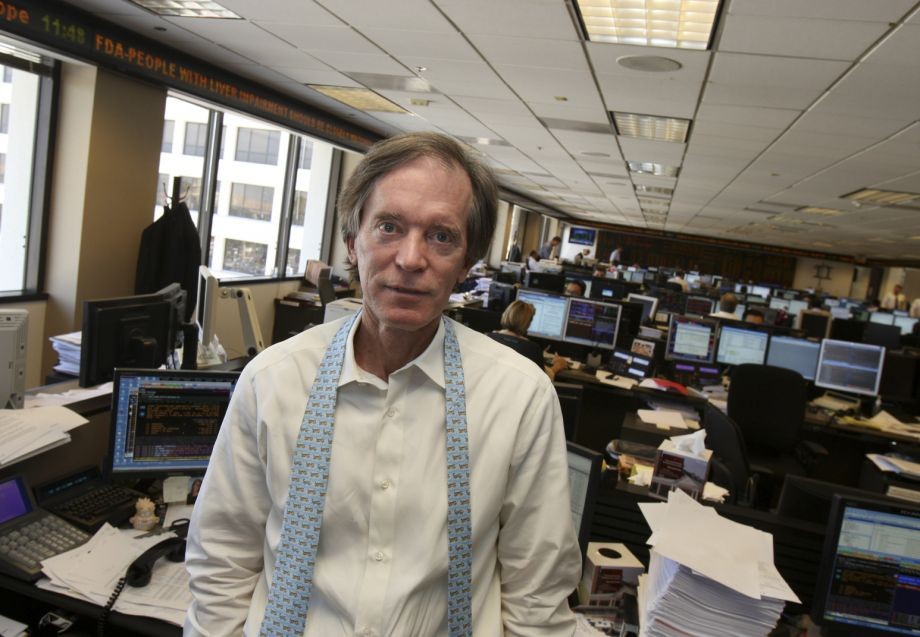Is Pimco s Total Return Bond Fund Too Big
Post on: 9 Апрель, 2015 No Comment

ENLARGE
Bill Gross’s Pimco Total Return Fund now has $237.2 billion in assets. Bloomberg
The sheer size of the inflows suggests that investors may be looking at the fund’s stellar historical returns. But the portfolio—with $237.2 billion in assets—is so big that some say it can’t operate as effectively in some markets as it once did. A bigger stake in low-yielding Treasurys, meanwhile, raises concerns about whether the fund, which has scored gains of 6.7% so far this year, can continue to beat the market. And its fees are on the high side for many retail investors.
There are plenty of smaller, nimbler and cheaper alternatives. The Harbor Bond Fund —which is subadvised by Pimco—is managed by Mr. Gross in the same fashion yet is cheaper and boasts one of the best records in the intermediate-term bond category, according to Morningstar.
Some investors are betting that Jeffrey Gundlach —the star bond-fund manager who was ousted from TCW Group Inc. in late 2009—will be able to replicate his gains at his new fund, the DoubleLine Total Return Bond Fund. Launched in April, the fund has so far attracted more then $1.5 billion in assets, making it the fastest-growing new mutual fund this year, according to Morningstar.
Lewis Altfest, a financial adviser in New York, is in the process of moving a portion of his clients’ money to the DoubleLine fund. I was looking for more testosterone in my mortgages, he says. While Pimco’s fund owns some mortgages, Mr. Gundlach is able to hold more nonagency mortgage-backed securities and looks to be better positioned, Mr. Altfest says.
Whenever a top-performing fund rakes in a substantial amount of new money, investors worry whether its size will hurt future returns. Mr. Gross, however, points out that some investors were worried when the fund hit $100 million, then $1 billion and then again at $100 billion. We’ve been able to outperform by our standard 100 basis points already in this particular year, he says. There’s still an unlimited amount of fish in the bond sea, he says, adding that the supply of new bond issues is increasing 100 times more than contributions to the fund.
About 60% of DoubleLine’s $1.6 billion in mutual-fund assets is in higher-yielding nonagency mortgage-backed securities, an area that Mr. Gundlach says is offering better value than corporate bonds and other more traditional markets. If we find an individual security that has certain unique characteristics and is $10 million security, it will have an impact on returns, he says. If you allocate that $10 million to a trillion dollar fund, you can’t find it in the rounding.
ENLARGE
This is a very mortgage-heavy portfolio … but it could be a core holding for an investor who understands that bias comes with some risks, says Sonya Morris, associate director of fund analysis at Morningstar, referring to the DoubleLine fund.
Jeffrey Feldman, a financial adviser in Rochester, N.Y. currently is using nontraditional bond funds that he believes wouldn’t take a big hit if interest rates were to rise. One of his largest holdings for clients is the Loomis Sayles Bond Fund, which he supplements with high-yield funds from Mainstay Investments and Vanguard Group. He also recently began using DoubleLine funds, having previously been in Mr. Gundlach’s TCW Total Return Bond Fund.
To be sure, investors can avoid fund fees and minimize interest-rate risk by purchasing an equal amount of bonds over a range of maturities, from shortest-term to longest. But with yields so low, Donna Skeels Cygan, a financial planner in Albuquerque, N.M. has been supplementing her clients’ Treasury bond ladders with a mix of Vanguard bond index funds, which she estimates can add another three percentage points in yield, plus an international bond fund.
Amid today’s low-yield interest-rate environment, low fees among bond funds are key, making exchange-traded funds and index funds attractive options.
Jeffrey Zures, a financial adviser in McLean, Va. is a big proponent of the iShares Barclays Aggregate Bond Fund, an ETF with expenses of 0.24%. As of June 30, the fund’s one-, three- and five-year total returns were 9.2%, 7.4% and 5.3%, respectively, according to Morningstar. Mr. Zures says he used to invest in Pimco Total Return, but in recent years has changed his practice to embrace a passive investment strategy. Rather than trying to find a needle in a haystack, he says, we decided to buy the overall haystack.














